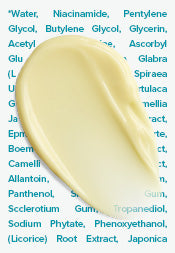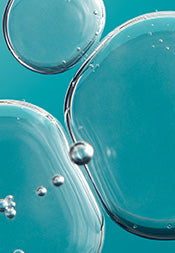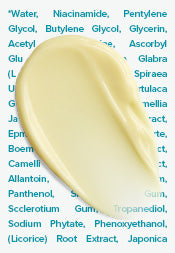When To Toss Out Beauty Products For Better Skin
We’ve all been there. You can’t bear to toss out that half-used expensive moisturizer you bought a year ago, or maybe you're not ready to part ways yet with your favourite lipstick that you've had for a couple of years. Even Paula is guilty of the latter — she has at least a dozen lipsticks she can’t bear throwing out. So this article is a reminder for the Paula’s Choice Research Team and you, too!
Hanging on to beauty products past their prime isn’t doing your skin any favours and might be causing the very problems you’re trying to get rid of. We’re here to teach you all about when they’re best to toss out or hold onto to avoid getting skin disorders or diseases from them.
Don’t Put That on Your Face!
It may seem harmless but expired beauty products can damage your skin barrier. A 2013 study published in the International Journal of Cosmetic Science evaluated women’s makeup routines and habits, and the results were more than a little cringe-worthy. 70% of women in the study used some type of expired product — mostly eye makeup (mascara, eyeliner, eye shadow). The researchers sampled the eye makeup for contamination and found that 67% were contaminated!
In addition to damaging your skin barrier, expired cosmetics can cause allergic reactions and infections, and may even lead to severe skin disorders. If you suspect your beauty products have gone bad (like if your mascara starts drying out or gets a funny odour), throw them out immediately!
All Beauty Products Expire
The tricky thing is that only products regulated as over-the-counter drugs (things like sunscreen and anti-acne products) have official expiration dates indicated on their packaging. Which is why we let you track all Paula’s Choice products' expiry dates to prevent you from mistakenly applying expired skincare products that may cause you skin disorders or diseases.
For other beauty products, you’re left to do the detective work (don’t worry, we’re getting to that part). Coming up with an expiration date depends upon a few things, including what kind of product it is, what ingredients it contains, how it is packaged, where you keep the product, and when you first use the product, which brings us to…
PAO = Period After Opening
Many beauty products carry a PAO symbol (a number followed by an M and an open jar icon). Although not a 100% sure bet, the PAO symbol tells you how many months a product can last after being opened, and when you should throw it away. For example, a “12M” would mean you should throw the product out 12 months after you've opened it. It is an excellent idea to follow that direction.
Unfortunately, this information is often on the box, so once you’ve tossed it, you won’t remember the expiry date. Even if it is on the container itself, once you’ve started using it, you likely won’t remember exactly when you first opened it, and may not realise you have been applying expired skincare products all along.
To make it easier to remember, you may consider using a Sharpie to indicate the date opened on the bottom or back of the package (this can be even more helpful than relying on the PAO date anyway).
All this is especially important for skincare because, in addition to the safety aspect, if the product contains antioxidants, skin-replenishing ingredients, etc. (as it should), they will eventually start to deteriorate, as even in the best packaging, they don’t last forever.
How to Spot a Beauty Product Gone Bad – The Basics
A beauty product that seems to have changed in colour from when you first bought it has separated into a runny, lumpy mess or developed a strange odour, or feels different on the skin than it once did (especially grainy or streaky) — all clear signs it needs to be thrown away.
The other basic guideline to know is that emollient or liquid textured products get contaminated far faster than powders. In addition, liquid products should be kept away from extreme heat sources, as it can cause the liquid formulas to melt and ingredients to separate, compromising the overall product quality and making it completely unsafe and unusable.
Lastly, suppose your product is labelled "preservative-free", you should definitely be more mindful of expiration dates because without some kind of preservative system, contamination happens quickly (think of how long a head of lettuce lasts in your refrigerator).
Cheat Sheet for When to Toss
While beauty products vary in their toss dates, the way you store or keep them can affect how long they’ll last too. If you’ve been good about keeping the product away from the air and light, avoiding touching the product in the container directly with your fingers, never letting them sit in your car on a hot day, and you don’t share the product (even with family members) you can follow the longest out use-by-date.
Here’s an easy cheat sheet to get you started:
Makeup
- Mascara (regular or waterproof) and eyeliner: 3 to 6 months (always toss out dry mascara — never add water to extend its life)
- Cream, liquid or stick foundations/concealers: 6 months to 1 year
- Powder-based products (including blush, bronzer, etc.): 2 to 3 years
- Lipstick, gloss and lip pencils: 2 to 3 years
Skincare
- Face cleansers: 1 year
- Toners for face: 6 months to 1 year
- BHA or AHA exfoliants: 1 year
- Facial or body moisturizers and serums: 6 months to 1 year
- Lip balm: 1 year
The DOs & DON’Ts of Making Your Products Last
Use these guidelines to prolong the shelf life of your beauty products.
DO store products in a cabinet or drawer.
DO wash your hands before using products, as applying makeup or skincare products involves our hands and face coming into contact, which could result in germs being transferred to the product or our skin.
DO tighten/secure the cap after each use, as it could get exposed to elements, dry the product out, compromise the quality, and leave it useless.
DO consider how climate and humidity will shorten a product's shelf life.
DO toss out eye products after you've had an eye infection, as it has been contaminated, and the bacteria may have already spread, which could cause further harm to your health if the product is continuously used.
DO abide by the expiration dates on sunscreens, acne products, and prescription products, as they may begin to degrade and won’t remain safe for use.
DON'T buy products packaged in jars of any kind. Jar packaging for skincare isn’t ideal for several reasons, including the fact that it carries a high risk of contamination due to dipping your fingers in the formula and getting exposed to heat and light, which may cause product instability. Especially those with a sensitive and high concentration of active ingredients.
DON’T store your products in the refrigerator. Skincare formulas are designed to withstand the average fluctuations in temperature in your home, but not long-term heat or cold storage—that means keeping your products in your fridge (or in your car on a hot day) will shorten their lifespan and stability. One exception to this rule is water-based ascorbic acid (pure vitamin C). Research has shown that storing these specific types of formulations in the refrigerator can help prolong stability and delay colour change.
DON'T store products in direct sunlight (for example, don’t keep them on a sunny window sill), as it can speed up the aging of the product, break down its ingredients, and overall spoil the product.
DON'T share your makeup and skincare products with others. Our skin is sensitive and could quickly develop a skin disease or infection.
DON'T add water or saliva to thin out or remoisten products.
DON'T "pump" your mascara. Doing this only pushes bacteria and air into the tube, contaminating and drying out your mascara.
DON’T forget to clean the cap or lid if you drop it on the floor. Use soap and water or rubbing alcohol and dry thoroughly before replacing it to avoid getting contaminated.
And remember, if it smells off, looks gunky, or the texture has changed significantly — definitely err on the side of caution and toss it out! Keep all these tips in mind to achieve better skin.
Check on your Paula’s Choice skincare expiry here.
Shop globally loved non-irritating skincare from Paula’s Choice.
References for this information
Journal of Food Composition and Analysis, May 2021, pages 1–10
Journal of Food Engineering, December 2012, pages 298–303; and November 2003, pages 21–29
Recommended Products
Water Infusing Electrolyte Moisturizer
EARTH SOURCED Power Berry Antioxidant Serum
JUMBO SKIN PERFECTING 2% BHA (Salicylic Acid) Liquid Exfoliant












